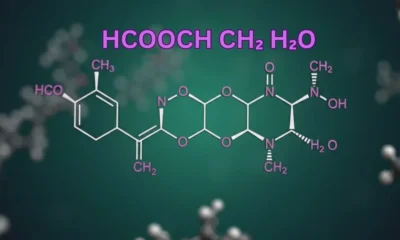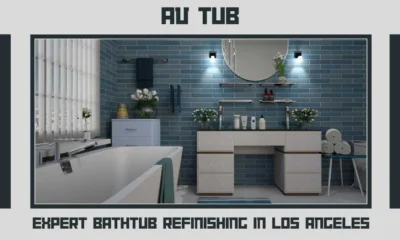GENERAL
The Butterfly Garden: A Dark Tale of Captivity, Survival, and Psychological Resilience

The Butterfly Garden is a chilling psychological thriller that addresses the tragic experiences of young women who were held captive in a secluded garden by a sadistic man referred to as the Gardener. The novel, therefore, blends horror, crime, and psychological drama to create a dark and unsettling plot. Its themes of trauma, survival, and control attract a reader’s dark fascination, being both disturbing and thought-provoking. The book’s unique storytelling, conveyed through the perspective of a survivor recounting her experiences to the FBI, keeps readers engaged, contributing to its popularity among fans of psychological thrillers.
About the Author: Dot Hutchison
Dot Hutchison is an American author known for her gripping psychological thrillers, particularly The Butterfly Garden, the first in The Collector series. She has also penned A Wounded Name, a retelling of Hamlet from Ophelia’s perspective. Hutchison’s works are characterized by their immersive quality, with frequent psychological undertones, trauma, and survival. Crime fiction, mythology, and gothic literature serve as some of the influences for her haunting storylines. An author skilled in developing complex characters and tight narratives, Hutchison has emerged as a powerful voice in the genre of psychological suspense.
Summary of The Butterfly Garden
The novel follows the story of the young girl, Maya, who is rescued from her captivity to recount her ordeal to FBI agents. She was one of the girls held in a prison of captivity in a secret garden where they are tattooed like butterflies and forced to survive under the obsessions of the twisted Gardener. The isolated mansion is lush yet ominous in its portrayal of this psychological horror. Through Maya’s narration, readers experience the darkness of the Gardener’s world, his sons’ involvement, and the psychological toll on the victims. The gripping storytelling keeps readers questioning Maya’s reliability while uncovering the terrifying details of her captivity.
Major Characters and Their Roles
Maya, also known as Inara, is a survivor who tells her story through her guarded personality and sharp intellect. The Gardener is a disturbed man who kidnaps and tattoos young women, holding them in his garden. His two sons, Desmond and Avery, play different roles; Desmond resents his father’s actions, while Avery is a sadist. FBI agents Victor Hanoverian and Brandon Eddison become Maya’s interrogators, revealing her story. There are other victims, whom the Butterflies acknowledge, each with individually tragic stories that underscore various responses to trauma and survival. Their relationships in this novel drive its emotional and psychological depth.
Themes and Symbolism
The novel explores power and captivity through the Gardener’s control over the Butterflies, highlighting both psychological and physical oppression. Survival and resilience shine through Maya’s actions and the ways the girls support one another. Psychological manipulation is evident in the Gardener’s justifications of his crimes. Tattoos symbolize the loss of identity and enforced transformation, as each girl is marked permanently. Justice and revenge likewise assume a major role, leading to moral repercussions involving survivors and perpetrators in their aftermath. Such themes make the novel more than just a thriller.
Psychological Aspects in the Novel
Trauma and PTSD are at the center of the novel, as Maya and the other Butterflies exhibit signs of severe psychological trauma. Stockholm Syndrome subtly comes into play, where some victims begin to develop complex feelings for their captor. The psychological complexity of the character, Gardener himself, is quite evident, portrayed with a distorted beauty and a way of justifying his crimes, adding to the disturbing nature of the novel as he believes he preserves these girls as living art. The psychological depth of both the captor and victims alike makes this a haunting tale; readers are invited to deconstruct the implications of trauma, control, and survival strategies.

Reception and Critical Reviews
Upon its release, The Butterfly Garden received significant attention due to its unusual and disturbing premise. Many readers praised the great suspense, deep character development, and psychological intensity of the novel. However, several critics found the dark themes too disturbing, while others criticized Maya’s occasionally detached narration. The trauma and captivity depicted in the book sparked debates about its realism and impact. Despite some criticisms, it has remained highly popular as an excellent example of engaging narration and adept handling of psychological themes, establishing itself as the best in its genre: a thriller.
Comparisons with Other Psychological Thrillers
The Butterfly Garden resembles The Silence of the Lambs, Room, Flowers in the Attic, and others as it delves into captivity, psychological trauma, and more visibly explores the challenges of human resilience. It differs from The Silence of the Lambs in that Hutchison’s book focuses more on victim experiences. Room tells a similar survival story from a child’s perspective, while Flowers in the Attic presents disturbing captivity within a family dynamic. Each book examines control and trauma in different ways, making The Butterfly Garden a unique yet comparable psychological thriller.
Real-Life Cases Similar to The Butterfly Garden
A novel reality mirrors real-life cases, particularly those of Ariel Castro’s victims, Jaycee Dugard, and the Fritzl case. The women are held captive for years. This reflects what occurred regarding psychological manipulation, trauma, and survival in the novel. The media representation of such stories then influences public perception of captives. Mainly, the media offers dramatic and misunderstood accounts of such experiences. The Butterfly Garden provides a fictionalized yet chillingly accurate depiction of the long-term effects of captivity, shedding light on the resilience of survivors and the psychological depth of both victims and perpetrators.
Lessons and Takeaways from The Butterfly Garden
This novel establishes the lasting impacts of trauma and the necessity for psychological support for survivors. The book also raises awareness of how manipulation and control can influence victims’ behaviors and mental states. It illustrates, through Maya’s resilience, the power of the human spirit in confronting horror. Readers gain insight into how justice is not always straightforward and how survival itself is an act of defiance. The story reminds readers that what may seem like a work of fiction often has real-life counterparts, and it serves as a call for greater understanding and empathy for those who have endured similar experiences.
Conclusion
The Butterfly Garden is a haunting psychological thriller that lingers long after the last page has turned. Its themes of trauma, captivity, and survival make it an engrossing yet uncomfortable read. This gripping narrative structure, well-developed characters, and psychological depth all make the novel a standout thriller despite its dark themes, rendering it an important book to discuss for its content on trauma and resilience. For those who appreciate thought-provoking thrillers, The Butterfly Garden is a must-read, offering a disturbing yet fascinating dive into the darkest corners of human nature.
-

 BIOGRAPHY7 months ago
BIOGRAPHY7 months agoBehind the Scenes with Sandra Orlow: An Exclusive Interview
-

 HOME1 year ago
HOME1 year agoDiscovering Insights: A Deep Dive into the //vital-mag.net blog
-

 HOME1 year ago
HOME1 year agoSifangds in Action: Real-Life Applications and Success Stories
-

 BIOGRAPHY1 year ago
BIOGRAPHY1 year agoThe Woman Behind the Comedian: Meet Andrew Santino Wife




























